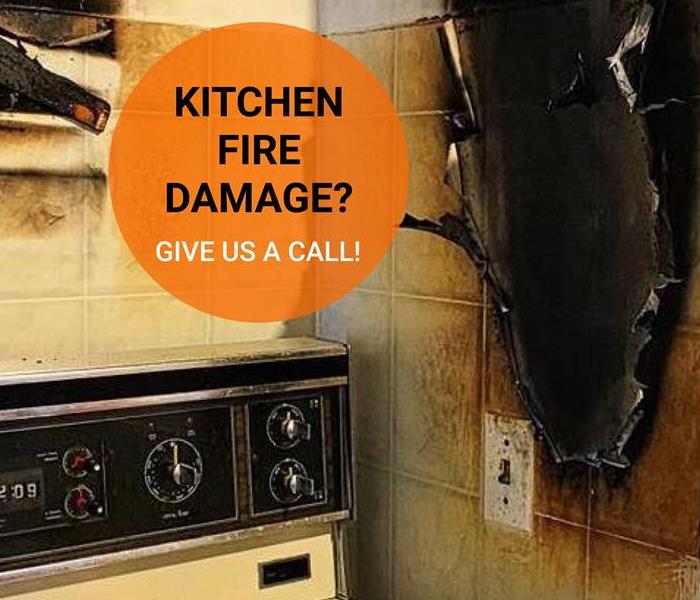Kitchen Fire Clean Up
5/17/2024 (Permalink)
Essential Tips for Cleaning Up Kitchen Fire Damage
A kitchen fire is one of the most common household disasters, and cleaning up after one can be overwhelming. The aftermath often includes smoke damage, charred walls, and a lingering odor that seems impossible to eradicate. However, with the right approach, homeowners can effectively manage the cleanup process and restore their kitchen to its former state. Here’s a step-by-step guide on how to tackle kitchen fire damage effectively.
Step 1: Assess the Damage Before any cleanup begins, it's essential to assess the extent of the damage. This includes identifying areas affected by fire, smoke, and water (used to extinguish the fire). It’s important to wear protective gear during this process to avoid inhaling soot and other harmful particles.
Step 2: Ventilation Open windows and doors to ventilate the area well and help clear out smoke and odors. Using fans can also help circulate the air and reduce smoke residue that's settled on surfaces.
Step 3: Soot and Smoke Removal Soot can be oily and easily smear, making cleaning challenging. Use a dry sponge or a vacuum with a HEPA filter to remove loose soot particles from surfaces before any wet cleaning. Then, clean all surfaces with a solution specifically designed to remove soot and smoke. This includes walls, ceilings, non-upholstered furniture, and cabinetry.
Step 4: Dealing with Odor Smoke odors can be persistent. After cleaning, it may be necessary to use additional methods to neutralize odors:
- Activated Charcoal: This can absorb a wide range of odors and can be placed in bowls throughout the kitchen.
- Vinegar: Set out bowls of white vinegar around the kitchen; vinegar is a natural odor absorber.
- Baking Soda: Sprinkle baking soda on soft surfaces like carpets and upholstered items, leave overnight, and vacuum.
Step 5: Cleaning Textiles and Upholstery Any textiles, including window treatments, seat cushions, and tablecloths, should be professionally cleaned to ensure that all odors and residues are removed. Washing fabrics in a mixture of hot water and vinegar can also help remove odors.
Step 6: Inspect and Replace Inspect appliances and electrical wiring affected by the fire for safety before using them again. Some appliances might need to be replaced to ensure safety. Also, consider replacing any cabinetry or countertops that were severely damaged.
Step 7: Repainting Once cleaning is complete and all surfaces are dry, repainting may be necessary. Use a primer designed to cover smoke damage and seal in any remaining odor before applying the final coat of paint.
Conclusion: Cleaning up after a kitchen fire involves careful planning and execution to ensure that the damage is thoroughly managed. By following these steps, you can effectively restore your kitchen and eliminate signs of damage. For extensive damage, however, it is always advisable to consult with professionals who specialize in fire damage restoration to ensure the safety and integrity of your home’s restoration.
Or just call us in with our trained techs to handle the situation.





 24/7 Emergency Service
24/7 Emergency Service
